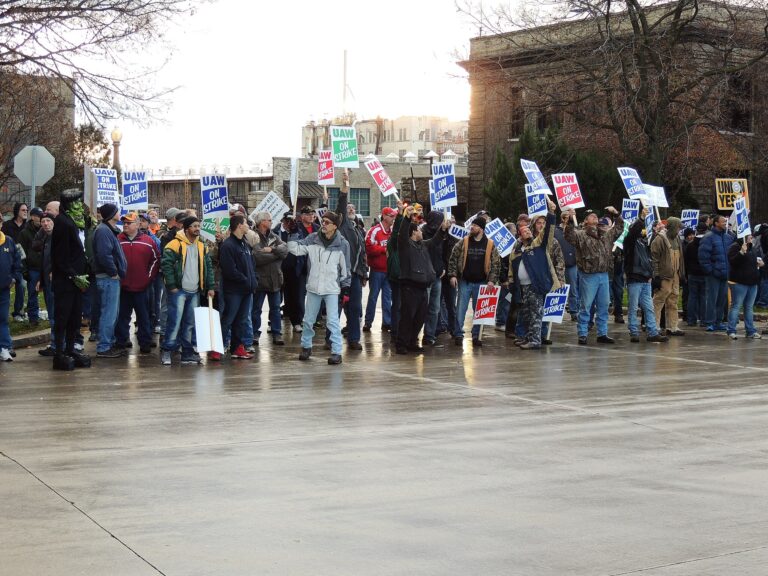
Andrew Strom is a union lawyer based in New York City. He is also an adjunct professor at Brooklyn Law School.
The day after the Epic Systems oral argument, the National Labor Relations Board’s General Counsel, Richard Griffin, sent an unusual letter to the Court. He disavowed his own answers to a line of questions by Chief Justice Roberts, and instead, he said that the NLRB agreed with the answers to the same questions provided by Daniel Ortiz, who represented the individual workers in the consolidated cases.
Griffin’s admission highlights the dangers of using rapid-fire questioning as an aid to deciding important issues, but ultimately the question and any answers given by Griffin, whether his response at the hearing, or his corrected response a day later, are irrelevant to the decision in the cases currently before the Court. In the Murphy Oil decision, in its brief, and in the oral argument, the NLRB repeatedly made the point that the rights granted by the National Labor Relations Act do not override the Federal Rules of Civil Procedure. Thus, workers do not have a freestanding right to file a suit as a class action if they cannot satisfy the ordinary requirements of numerosity, typicality, commonality, and adequacy of representation. But, an employer violates the NLRA if it seeks to enforce an agreement prospectively waiving an employee’s right to file or join a class action suit. From the point of the view of the NLRB, an agreement prospectively waiving the right to file a class or collective action suit is no different from an agreement prospectively waiving the right to join a union.
The NLRB has also conceded, based on settled law, that an employer may channel all disputes into arbitration, provided there is a mechanism for workers to bring class or collective claims. But, just as with the courts, when workers get to arbitration, the rules of the forum apply. Chief Justice Roberts then tried to see how far this principle that “the rules of the forum apply” would go. He asked, what if the rules of the arbitral forum say you can proceed individually, but you can only proceed collectively if the class represents more than 50 people? Griffin responded that the employees take the rules of the forum as they find them. Griffin further explained that the prohibition in the NLRA runs to employer interference, and not to interference by a presumably neutral entity like the American Arbitration Association (AAA). Justice Alito then asked if the answer would be the same if the arbitration forum prohibited all class actions, and Griffin said that it would. Justice Alito then pointed out that employers would be able to exploit that hypothetical rule by presenting workers with agreements requiring them to arbitrate not before the AAA, but before the XYZ arbitration association, which has rules that don’t allow class actions. (Of course, to Justice Alito, this would be a feature, not a bug.) Griffin was cut off by Justice Ginsburg before he had a full opportunity to respond to Justice Alito, but he seemed to suggest that the Board would be powerless to stop the subterfuge proposed by Justice Alito. Griffin did go on to point out that the National Academy of Arbitrators had filed an amicus brief explaining that arbitrators can hear collective claims without sacrificing the informality, simplicity, and flexibility that are hallmarks of arbitration.
When Chief Justice Roberts posed his same hypothetical to Daniel Ortiz, Ortiz answered that an employer would violate the NLRA if it coerced employees into a particular forum that maintains a set of rules that interfere with collective action. Griffin has clarified that this is the NLRB’s position as well. Of course, Griffin cannot say one way or the other what the NLRB’s position would be until the NLRB decides a particular case presenting those or other hypothetical facts. As Griffin himself explained earlier in the argument, the Board is not bound by the opinions of its General Counsel, and in fact, it often comes to a contrary conclusion. But, the source of the confusion probably stems from the fact that the hypothetical posed by the Chief Justice is so at odds with reality. If the National Academy of Arbitrators came to the view that certain categories of collective arbitrations are unworkable, and if it succeeded in getting the AAA and other respected arbitral forums to adopt rules reflecting those views, then Griffin’s initial answer probably would be correct – workers might have no recourse if the forum’s rules required individual arbitration of certain claims. But, if the National Academy of Arbitrators continues to adhere to its view that collective arbitration is both workable and desirable, then rules prohibiting collective arbitration would be suspect, and an employer’s decision to channel claims into an arbitration forum that prohibits collective claims would be no different than what occurred in the cases currently before the Court.
One point worth noting is that while the Chief Justice and Justice Alito may have been trying to provide employers with a roadmap to accomplish the same goal through different means, their hypothetical questions do nothing to help the employers win the current case. In all three cases before the Court, the ban on collective actions was not the result of a rule imposed by an arbitral forum, but rather it was the result of an agreement that the employers required workers to sign in order to get and/or keep their jobs. If Chief Justice Roberts and Justice Alito are focused on ways to soften the blow for employers, then there may be reason for workers to feel optimistic about the outcome after all.










Daily News & Commentary
Start your day with our roundup of the latest labor developments. See all
January 7
Wilcox requests en banc review at DC Circuit; 9th Circuit rules that ministry can consider sexual orientation in hiring decisions
January 5
Minor league hockey players strike and win new deal; Hochul endorses no tax on tips; Trump administration drops appeal concerning layoffs.
December 22
Worker-friendly legislation enacted in New York; UW Professor wins free speech case; Trucking company ordered to pay $23 million to Teamsters.
December 21
Argentine unions march against labor law reform; WNBA players vote to authorize a strike; and the NLRB prepares to clear its backlog.
December 19
Labor law professors file an amici curiae and the NLRB regains quorum.
December 18
New Jersey adopts disparate impact rules; Teamsters oppose railroad merger; court pauses more shutdown layoffs.